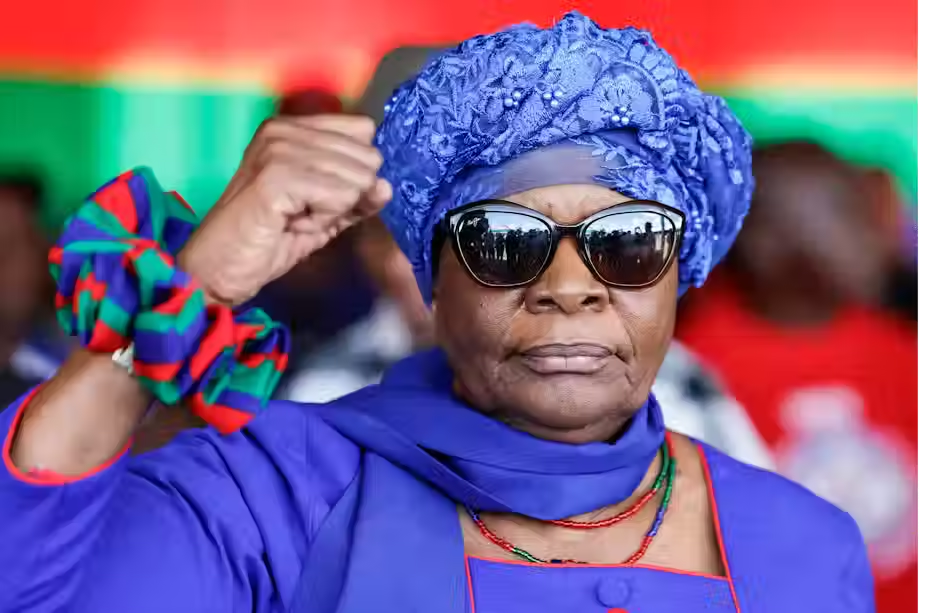Nation in Transition: South Korea's Post-War Development and Recovery
- Tarana Dutta

- Oct 24, 2023
- 6 min read
I. Introduction
Wars and colonial pasts hamper the process of country building as well as development. South Korea, soon after tasting independence from the gruesome Japanese colonisation, was thrown into a war with its neighbouring country of North Korea. From having its culture erased to becoming an arena of the Cold War, South Korea has witnessed it all. Through several hardships and many trials and errors, the country has raised itself from poverty and has managed to establish itself as a growing economy, supported by several successful entrepreneurs and artists.
II. Japan
In 1910 Japan and Korea signed the “Japan-Korea Annexation Treaty”, establishing the 35 years of Japanese colonial rule over the Korean nation. Between the years of 1910-1945, Japan attempted to erase the native culture of the land to establish its protectorate. From wiping out 200,000 historical documents to condemning the use of Korean in institutions, Japan even went as far as taking over Korean land to replace its vegetation with non-native species. Japan’s rule was not only horrific but also worked to eradicate the Korean identity. After WWII the United States and the Soviet Union divided Korea into two from the 38th Parallel, to make the removal of Japanese forces easier (Blakemore, 2018).
III. North Korean Invasion and the Korean War
The Korean War broke out in June 1950, with the North Korean invasion of its Southern counterpart. The aim was to militarily conquer the South and unify the two Korean nations under one communist regime. This conflict soon became an arena for the Cold War conflict, with the Soviet Union supporting Kim Il Song of the Democratic People’s Republic of Korea in the North, and the United States backing Syngman Rhee from the Republic of Korea in the South (Historians, n.d.).
In 1953 President Eisenhower ended the armed conflict between Korea, through a combination of diplomacy and a show of America’s prowess through its military leading to the signing of an armistice ending all organised combat and operations. This led to the Korean Peninsula remaining divided like before (Eisenhower Presidential Library, Museum & Boyhood Home). The war left a lasting impact on the country of South Korea, leading to socio-economic challenges it still faces today.
IV. Failed Recovery
The destructive 3-year Korean War left the peninsula socio-economically shattered. In the early stages of rebuilding their countries, North Korea presented impressive recovery and organised an efficient government. In contrast, South Korea however struggled to get back on its feet suffering from political corruption and turmoil, with its economy taking baby steps towards growth.
In its earlier days, South Korea was greatly dependent on aid provided by the United States. Syngman Rhee emerged as a tyrant, who continued to win presidential elections through fraud and went as far as to execute any political competition. This led to the “April Revolution '', which was followed by the drafting of a new Constitution in 1960. Under this new Constitution, the authority was placed into the hands of Prime Minister Chang Myŏn. Under the Chang government, the Korean Won was devalued, leading to double-digit inflation and creating more hardships for wage earners as well as businesses.
Under both Rhee and Chang Myŏn, the South Korean economy grew at a snail’s pace. Seeing the disappointing growth of South Korea, the US felt their aid was being misused and encouraged Seoul to establish trade relations with Tokyo to push Japan into investing in the South Korean economy through exports. Under Rhee’s presidency, South Korea had only established import relations and hence witnessed no growth in terms of trade. Further, the former president refused to sign any form of trade treaty with the country’s old enemy (Seth, 2023).
V. Opportunities
In 1961 the military government under Park came to power, and the country’s condition was miserable. Other northeast Asian countries were gradually improving with the Japanese economy witnessing a steady incline, and North Korea experiencing rapid industrial growth. Though the beginnings of South Korea seemed rather disadvantageous, within the cracks of the country lay a large population of talented individuals, who with the help of American aid were able to foster a large core of well-trained and educated bureaucrats, educators, and skilled professionals.
South Korean society soon became the hub of huge business conglomerates called chaebŏl, which helped boost the status of the country’s economy. Some popular examples of these powerful entrepreneurs would be Chung Ju-young, founder of Hyundai, Koo In-hwoi, founder of LG, and lastly the richest man in Korea and the founder of Samsung, Lee Byung-chull. Further, the rapid transformation and expansion of South Korea, even throughout the war allowed the country to house a massive literate society. Between 1960 to 1980 the percentage of middle school-aged kids enrolled increased from 29% to 90%.
These two hidden factors allowed South Korea to undergo social changes that led it to dive into the export-led development path, in contrast to its more import-led economy of the past. (Seth, 2023)
VI. Transformation in Research and Development
President Park Chung Hee, before his assassination in 1979 transformed the economy from being more import-dependent to a more independent economy that focused on the home-grown industries like clothing and textiles. He pushed for investments in R&D under his first Five Year Economic Development Plan. Further, the government also pushed the newly emerged chaebŏls to invest in R&D and also acted as their shield from any foreign competition.
Taking Samsung as an example, founder Lee Byung Chul came from a very humble background, working as a grocery trader in 1938, post the Korean War, he expanded his enterprise into the textile industry and soon after began manufacturing electronics in the 1960s. Samsung soon emerged as the global leader in the manufacturing of Tablets, Mobiles, and Computer Chips and even dived into heavy industries such as aerospace and computing (Dayton, 2020).
According to the United Nations Industrial Development Organisation South Korea is presently ranked second for R&D intensity, high-tech density, and patent activity and is ranked sixth for research concentration. South Korea spends a large percentage of its GDP on R&D and has grown quite significantly when compared to other countries such as the US and Japan (Ana Maria Santacreu, 2022).
These large-scale investments in R&D allowed South Korea to emerge as a global leader in innovation and entrepreneurship especially in communication technology.
VII. Korea’s Soft Power in Entertainment
Economic Development, growth in creative content, limited domestic market and development of digital technology, and especially the widespread popularity of Korean media and entertainment are factors that define Korea’s soft power.
Korean entertainment and culture have seen a boom in its popularity in recent years. One of the first appearances of Korean media in the western hemisphere was Gangnam style in 2012, it charted as number two in Billboard's Hot 100. Psy (singer of Gangnam style) wouldn’t be the last Korean artist to leave an impact globally with the success of other K-pop singers such as BTS, who not only became the First Korean act to reach No. 1 on the Billboard Hot 100 but also became the most viewed YouTube video within 24 hours (Kim, 2022).
Further Korean Films like ‘Train to Busan’ also garnered wide-ranging support from all over the world, with some movies like ‘Parasite’ and "Everything Everywhere All at Once” winning big-name awards like the Oscars.
Due to the rise in popularity and influence of Korean culture internationally, South Korea has witnessed a rise in its foreign population, from a measly 180,000 in 1995 to an astounding 2.5 million in 2019 (Chung, 2021).
Graph Source: Carnegie Endowment for International Peace
VIII. Conclusion
South Korea’s origins though rocky laid the foundation for its future growth. The development in the country may have been slow, but the investment initiatives taken by the government in R&D led Korea to become a powerhouse for innovation. Further credit can be given to the Korean entertainment industry for being a crucial player in establishing Korea’s soft power globally.
South Korea’s resilience and transformation can be seen as an example of how a country can rise from its shattered political and economic condition, and prove itself to be a growing global leader.
References
Eisenhower Presidential Library, Museum & Boyhood Home. (n.d.). Korean War | Eisenhower
Presidential Library. Retrieved from Eisenhower Presidential Library:
Ana Maria Santacreu, H. Z. (2022, February 07). How Did South Korea's Economy Develop So Quickly? Retrieved from Saint Louis Fed Eagle: https://www.stlouisfed.org/on-the-
economy/2018/march/how-south-korea-economy-develop-quickly
Blakemore, E. (2018, February 28). How Japan Took Control of Korea. Retrieved from History: https://www.history.com/news/japan-colonization-korea
Chung, E. A. (2021, June 29). How South Korean Demographics Are Affecting Immigration and Social Change. Retrieved from Carnegie Endowment for International Peace: https://carnegieendowment.org/2021/06/29/how-south-korean-demographics-are- affecting-immigration-and-social-change-pub-84819
Dayton, L. (2020, May 27). How South Korea made itself a global innovation leader. Retrieved from Nature: https://www.nature.com/articles/d41586-020-01466-7
Historians, O. o. (n.d.). Korean War and Japan’s Recovery. Retrieved from U.S. Department of State: https://history.state.gov/milestones/1945-1952/korean-war
Kim, D. M. (2022, October 31). The Growth of South Korean Soft Power and Its Geopolitical Implications. Retrieved from Air University (AU):
korean-soft-power-and-its-geopolitical-implications
Seth, M. J. (2023, June 16). An Unpromising Recovery: South Korea's Post-Korean War Economic Development: 1953-1961. Retrieved from Association for Asian Studies: https://www.asianstudies.org/publications/eaa/archives/an-unpromising-recovery- south-koreas-post-korean-war-economic-development-1953-1961/
About the author: I am Tarana Dutta and I am in my second year of B.A. (Hons.) Global Affairs. I am particularly interested in topics related to East and South East Asia and have been actively graphic designing for the past 4 years.
.png)





Comments